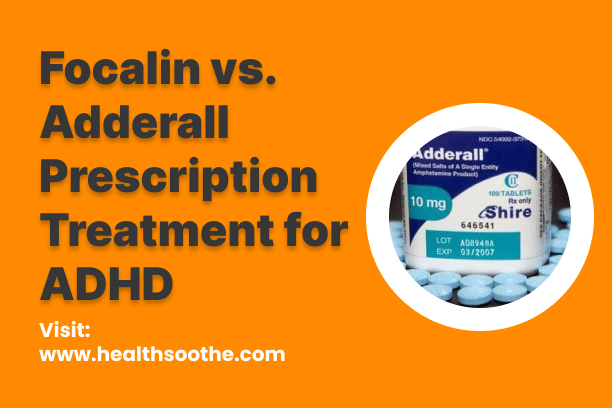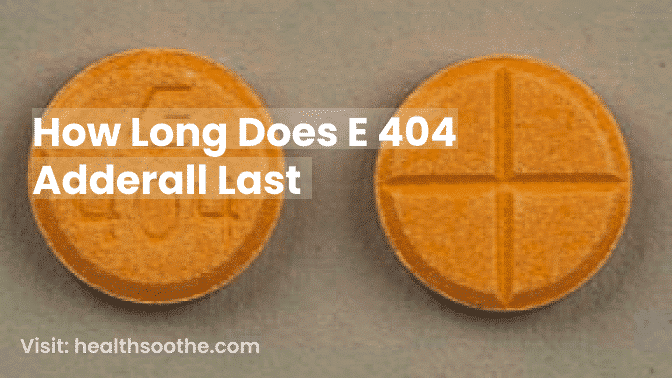"Focalin and Adderall are medications classified as central nervous system stimulants, available in both generic and brand-name variants. Adderall contains amphetamine and dextroamphetamine as active ingredients, while Focalin's active ingredient is dexmethylphenidate hydrochloride.
These stimulants, like Focalin and Adderall, influence neurotransmitter activity in the brain associated with hyperactivity and impulsiveness, particularly dopamine.
Both Focalin and Adderall fall under Schedule II controlled substances according to the U.S. Drug Enforcement Administration (DEA), reflecting their significant potential for drug abuse and addiction. Schedule II represents the highest level of control assigned to drugs with recognized medical applications."
Focalin vs Adderall: Conditions Treated
"Both Focalin and Adderall are prescribed for managing attention deficit hyperactivity disorder (ADHD). In addition to ADHD, the FDA has approved Adderall for treating narcolepsy, a prevalent sleep disorder.
While Focalin is occasionally employed off-label to address narcolepsy, it lacks FDA approval for this specific use."
Attention Deficit Hyperactivity Disorder
"Attention Deficit Hyperactivity Disorder (ADHD) is among the most frequently diagnosed neurodevelopmental disorders in children within the United States. Although ADHD has historical roots, its prevalence has risen notably in recent decades.
While the majority of individuals receive an ADHD diagnosis during childhood, some may only be diagnosed in adulthood or might not exhibit symptoms until then, known as adult-onset ADHD. Although symptoms often persist from childhood to adulthood, some individuals notice a reduction or improvement with age.
The conventional medical definition of ADHD combines three previously distinct disorders. The classic presentation involves hyperactivity and impulsive behaviors. In the past, those with difficulty focusing, without hyperactivity, received a diagnosis of Attention Deficit Disorder (ADD), constituting the second form of ADHD. The third form comprises a combination of hyperactive-impulsive and inattentive presentations.
Symptoms and presentations may change over a person's lifetime. Common indicators of ADHD include daydreaming, difficulty controlling impulses, fidgeting, frequent forgetfulness, resistance to temptation, excessive talking, interpersonal challenges, hyperactivity, careless mistakes, and difficulty paying attention.
Both Focalin and Adderall are FDA-approved for ADHD treatment, suitable for both adults and children. Adderall can be administered to children as young as three years old, whereas Focalin is not recommended for those under six years of age."
Read Also: How much are Pillsbury Halloween cookies?
Pros and Cons of Focalin vs Adderall
Focalin
Pros
- Dexmethylphenidate Hydrochloride
- Short Duration
- Available in Generic Form
Cons
- Limited Forms
- Potential for Side Effects
Adderall
Pros
- Dual Active Ingredients
- Various Forms
- Efficacy
Cons
- Higher Risk of Side Effects
- Potential for Abuse
- Cost
Differences Between Focalin and Adderall
Focalin
- Active Ingredient: Dexmethylphenidate hydrochloride.
- Type: Focalin contains only the dextro-isomer of methylphenidate, which is believed to be the more pharmacologically active component.
Adderall
- Active Ingredients: Amphetamine and dextroamphetamine.
- Type: Adderall is a combination of amphetamine salts, including both the dextro- and levo-isomers.
Alternative to Focalin vs Adderall
Methylphenidate-Based Medications:
- Ritalin (Methylphenidate):
- Type: Similar to Focalin, Ritalin contains methylphenidate as its active ingredient.
- Forms: Immediate-release and extended-release formulations are available.
- Concerta (Methylphenidate Extended-Release):
- Type: Extended-release form of methylphenidate.
- Duration of Action: Provides a sustained release of medication over an extended period.
- Metadate (Methylphenidate):
- Type: Another formulation of methylphenidate available in immediate-release and extended-release forms.
Focalin vs Adderall: Cost
"Both Adderall and Focalin are offered in generic and brand name forms, with significant cost savings associated with the generic versions.
The generic formulations of amphetamine and dextroamphetamine, available in both immediate release and extended release, can be acquired for a monthly cost of ten dollars or less. In contrast, the brand name Adderall, whether immediate or extended release, commands a monthly prescription cost of approximately 262 dollars.
Generic Adderall, inclusive of amphetamine and dextroamphetamine, is widely covered by commercial insurance plans, Medicaid, and Medicare.
The extended-release brand name Focalin XR is notably pricier than brand name Adderall, with a typical one-month prescription cost of about 408 dollars. On the other hand, the immediate release brand name Focalin is more economical than its Adderall counterpart, typically priced at around 48 dollars for a one-month prescription.
The generic version of Focalin, dexmethylphenidate, is available for less than 20 dollars per month. Commercial insurance often covers both generic and brand name immediate release Focalin, as well as the generic version of Focalin XR. However, the brand name Focalin XR is frequently not covered."
Focalin vs Adderall: Side Effects
"Both Adderall and Focalin carry a range of side effects, affecting both pediatric and adult patients, with some potentially serious effects requiring medical attention.
Most individuals encountering side effects from Adderall or Focalin typically experience them when initiating the medication or adjusting their dosage. While some may observe a reduction in side effects as their body adapts to the medication, others may continue to experience them throughout their use of Adderall or Focalin.
If you encounter persistent or severe side effects, it is advisable to promptly contact your doctor for medical guidance or seek immediate medical attention."
Adderall
Common side effects of Adderall that typically do not necessitate medical attention include:
- Dry mouth
- Stomach pain and upset stomach
- Weight loss
- Anxiety
- Lack or loss of strength
Serious side effects of Adderall that require immediate medical attention include:
- Fast, pounding, or irregular heartbeat or pulse (heart problems)
- Lower back or side pain
- Difficult, burning, or painful urination
- Bloody or cloudy urine
- Bladder pain
- Frequent urge to urinate
Less common side effects of Adderall that also require immediate medical attention encompass:
- Headache
- Diarrhea
- Chills
- Shivering
- Joint pain
- Vomiting
- Fever
- Muscle aches and pains
- Hoarseness
- Trouble sleeping
- Nausea
- Runny nose
- Allergic reactions
- Unusual tiredness or weakness
- Loss of appetite
- Sore throat
- Cough
- Sweating
Focalin
Common side effects of Focalin vary based on the age group, with reported effects in children (6-17 years) including:
- Dyspepsia (indigestion)
- Headache
- Decreased appetite
- Anxiety
In adults, common side effects include:
- Dry mouth
- Headache
- Pharyngolaryngeal pain (pain in the back of the mouth or throat)
- Dyspepsia (indigestion)
- Anxiety
Serious side effects associated with Focalin use encompass:
- Priapism (painful or prolonged erections) in both adults and children
- Unexplained wounds on the fingers or toes
- High blood pressure or increased heart rate
- Circulation problems in the fingers or toes, including peripheral vasculopathy or Raynaud’s phenomenon
- Slowing of growth (height or weight) in children using Focalin
Individuals experiencing any of the serious side effects linked to Focalin should promptly seek medical attention from a healthcare professional.
Focalin vs Adderall: Warnings for Use
"Focalin and Adderall are both categorized as Schedule II controlled substances due to their high risk of abuse and addiction, prompting the inclusion of a black box warning on each drug.
These medications are commonly misused by individuals without a prescription seeking enhanced focus or concentration. Prolonged, non-medical use often leads to physical or psychological dependence, marked by symptoms such as sweating, nausea, anxiety, depression, nightmares, body aches, vomiting, muscle weakness, and withdrawal.
Dependence on Focalin or Adderall can result in withdrawal symptoms when usage is abruptly stopped or dramatically reduced over a short period. Patients using these drugs for more than two weeks should consult a medical professional when adjusting or discontinuing their medication to manage potential withdrawal symptoms like mood changes, cravings, anxiety, shaking, fatigue, agitation, sleep disturbances, increased appetite, depression, and unusual dreams.
Both Adderall and Focalin pose serious risks to the heart and cardiovascular system, with Adderall carrying a black box warning from the FDA. Prolonged abuse of these medications may lead to health conditions such as hyperactivity, heart disease, insomnia, tremors, constipation, weight loss, jitteriness, breathing difficulties, headaches, abdominal pain, dizziness, palpitations, dry mouth, and other concerns.
It is crucial to disclose a comprehensive medical history to your doctor, as certain conditions may pose risks when taking Focalin or Adderall. Additionally, individuals should avoid using these medications for ADHD treatment if they are taking MAOIs, have anxiety or tension, glaucoma, agitation, or extreme sensitivity to the medication's effects."
Conclusion
Focalin and Adderall, both Schedule II controlled substances, play crucial roles in managing conditions like ADHD. However, their potential for abuse and addiction warrants careful consideration and adherence to prescribed usage. Recognizing the risks associated with prolonged or non-medical use, including physical and psychological dependence, withdrawal symptoms, and adverse health effects, is essential.
Patients are strongly advised to seek medical guidance when adjusting or discontinuing these medications to manage potential withdrawal symptoms effectively.
Additionally, a thorough discussion of one's medical history with a healthcare professional is imperative to ensure the safe use of Focalin or Adderall. The black box warnings on these medications emphasize the importance of responsible and informed use. It is crucial for individuals to prioritize their health, adhere to prescribed guidelines, and consult with healthcare professionals for personalized advice on medication use."



